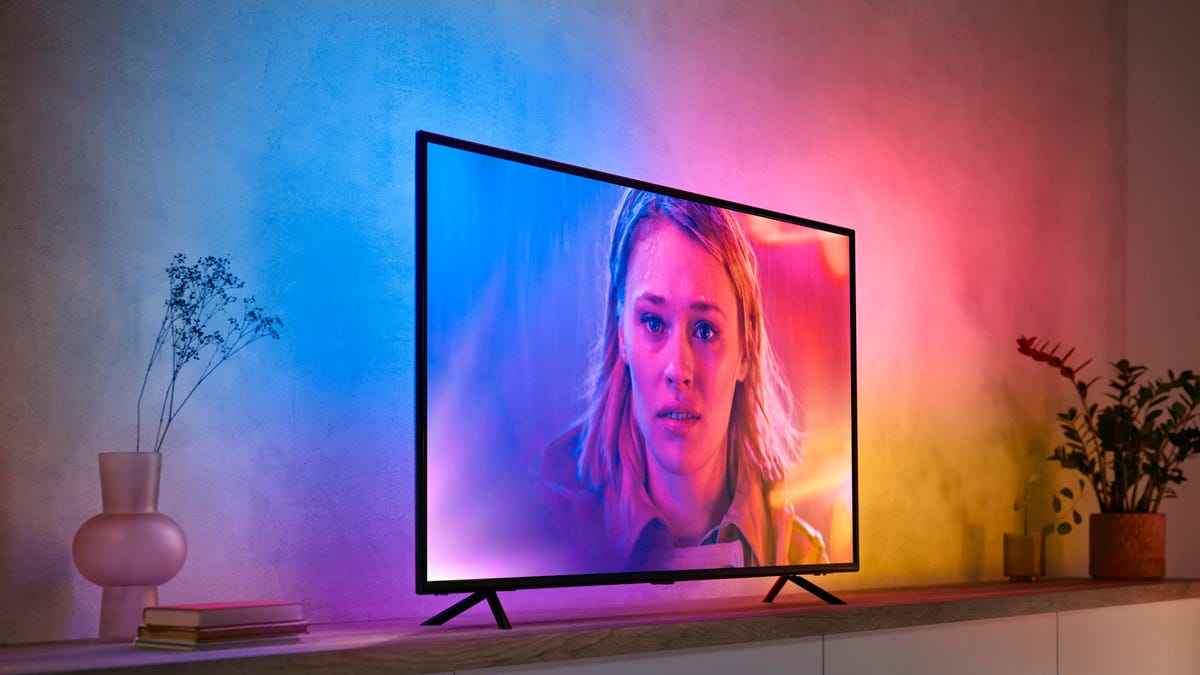Philips Hue finally has a multicolor light strip. Too bad it costs way too much
Surely, Hue can't be serious.

The team behind Philips Hue's color-changing smart lights announced its newest products this week. Chief among the new bulbs and fixtures is a Philips Hue Play Gradient Lightstrip that's designed for the back of your TV and capable of putting out multiple colors at once.
It's an overdue addition to the lineup. Hue Entertainment, a feature that matches your lights to what's on your TV, has been a big focus for the brand over the past few years, and previous Hue lightstrips only put out one color at a time. A multicolor upgrade is an excellent step in the right direction -- and it also catches Philips Hue up with Lifx, a key competitor that's been making and selling a smart, multicolor light strip for about four years now.
That's all well and good, but the next part is anything but. Signify, the company behind Philips Hue, thinks you should pay $200 for this thing.
I'm going to go out on a limb and say that you should not.
Simply put, $200 is ridiculous. $200 is more than twice as much as the previous Hue lightstrip. $200 is more than twice as much as that other multicolor lightstrip from Lifx, and almost three times as much as the TV-specific, budget-friendly, second-gen follow-up to that Lifx strip. $200 is a big, dumb cash grab.
It doesn't take any special lighting trickery to put out multiple colors at once. The old strip was already capable of shining at any shade from any part of the strip -- it just needed better programming to handle different colors in different places at the same time, and perhaps a new plastic housing around the diodes to help diffuse the light and blend the colors together. None of that necessitates a 250% price increase.
I asked Philips Hue founder and head of technology George Yianni how he justifies the price jump. In his view, the Gradient Lightstrip is akin to having multiple Hue lights on the back of your TV, and less comparable to a single previous-gen strip. He also pointed to the custom silicon driver needed for each of the strip's 5-inch segments.
"The gradient technology lets us control each 5-inch segment independently with full 5-channel LED control without compromising on any of the light quality or accuracy from the bulbs," he explains.
Again, that's nothing new -- the Lifx Z strip does the same basic thing for well under $100.
You can't cut the new Hue Play Gradient Lightstrip, but it sells in multiple sizes. A strip designed for a 55-inch TV costs $200 -- make that $220 for a 65-inch and $240 for a 75-inch.
Yianni adds that the new lightstrip has a premium matte-black backing designed to blend in with modern TV design. That might matter to some, I suppose -- but this is a product that you'll stick to the back of your TV and likely never look at again.
I should also mention that $200 is the price for a strip that's sized for a 55-inch TV. If your TV is bigger than that, you'll need to pay even more -- $220 for a strip sized for a 65-inch TV, or $240 for one that fits a 75-incher.
Speaking of TVs, let's talk about Hue Entertainment. It's a legitimately neat feature that syncs real-time, positional lighting changes with the colors on your TV screen, and when it first debuted a few years back, it seemed like the perfect moment for Hue to finally introduce a multicolor light strip. Clearly, Signify wanted the Hue die-hards to spend a couple of hundred dollars on other lights, first. Looking at you, Hue Signe.
And it's not just lights. To connect Hue Entertainment directly with the content on your TV, you'll need the Hue Play HDMI Sync Box. That doodad will cost you another $230. If Signify really wants Hue Entertainment to take off, then it ought to package that HDMI Box with the new lightstrip for something less than $300. Don't hold your breath waiting for a bundle like that.
A new version of the Philips Hue Iris table lamp goes on sale this October for $100.
As for the rest of the announcements, Signify also introduced new versions of the Philips Hue candelabra bulbs that add in Bluetooth radios for easier pairing, and for localized control without a Hue Bridge. Those still cost $50 each for full-color versions and $25 each for tunable white versions. They're available now. Meanwhile, a new version of the Philips Hue Iris table lamp with richer colors, better dimming, improved brightness and a fabric-wrapped cord hits stores on Oct. 19. That one will cost $100.
As for the new Philips Hue Play Gradient Lightstrip, it arrives in stores on Oct. 16. You can preorder it today, but please don't.

